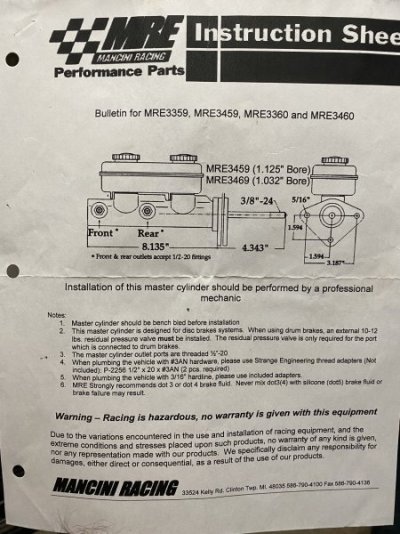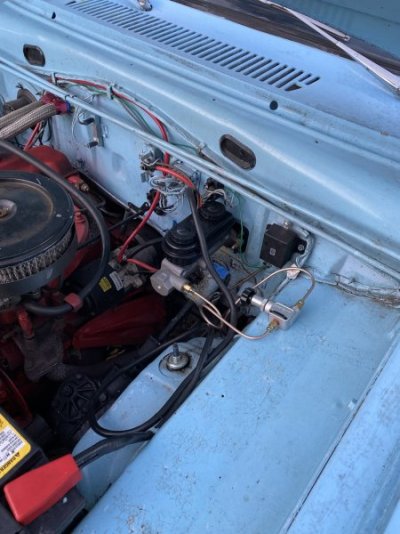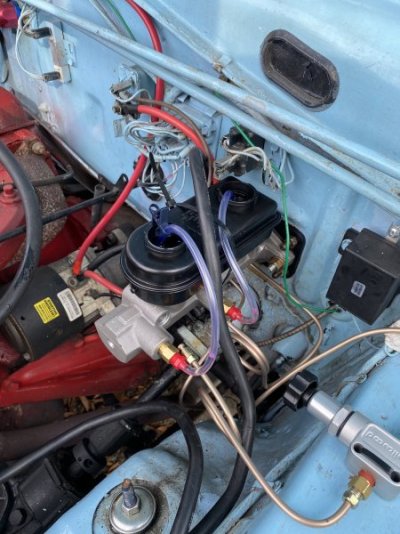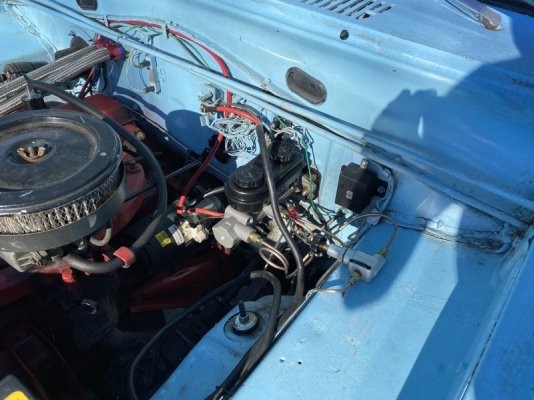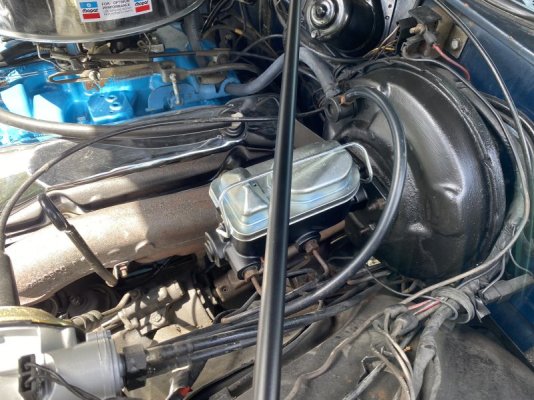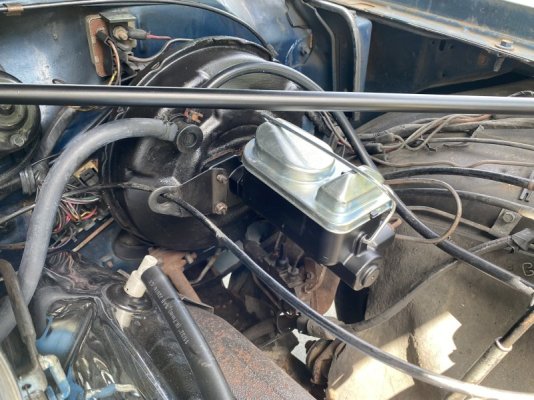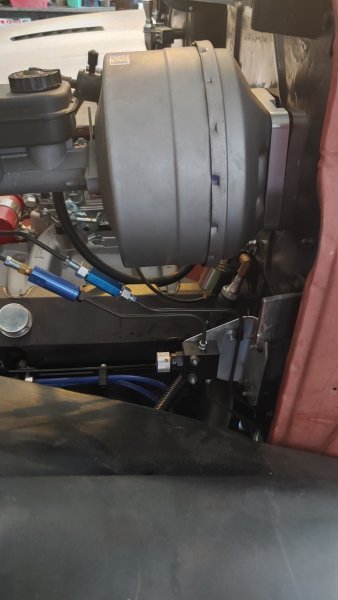I bench bled a master cylinder today and found that while pushing the piston in and out, the front port got fluid first. For the first 1/3 of the piston travel, the rear port wasn't getting any pressure or bubbles.
The front port serves the rear brakes, the rear port serves the front brakes.
It seems odd that the rear would get pressure first. I always thought that master cylinders sent fluid equally to both ports at the same time.
Is this normal?
Secondly.....
I have read of people running brake lines in manners different than stock and leaving out a proportioning block or distribution block. I'm looking to do the same.
I plan to run the master cylinder REAR port to a T where it will feed the two front brake hard lines.
For the rear, I plan to use a simple "union" style fitting like shown below:


Does anyone see a problem by running the brake lines this way?
The front port serves the rear brakes, the rear port serves the front brakes.
It seems odd that the rear would get pressure first. I always thought that master cylinders sent fluid equally to both ports at the same time.
Is this normal?
Secondly.....
I have read of people running brake lines in manners different than stock and leaving out a proportioning block or distribution block. I'm looking to do the same.
I plan to run the master cylinder REAR port to a T where it will feed the two front brake hard lines.
For the rear, I plan to use a simple "union" style fitting like shown below:
Does anyone see a problem by running the brake lines this way?

